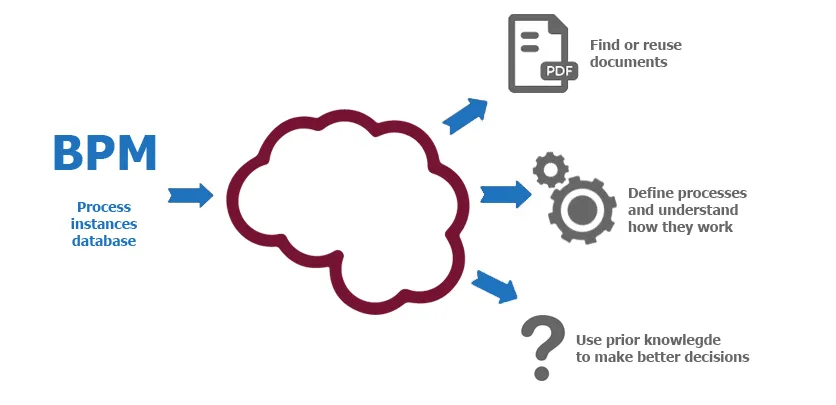Managing embedded knowledge in business processes
Blog: Flokzu
In previous posts we briefly introduced the discipline of knowledge management. A first and basic application of knowledge management is to retrieve information and documents previously used, reuse them and take advantage of the knowledge embedded in them.
We have to accept that knowledge is a valuable asset in all small business (or organizations in general) and it often is the competitive advantage that leads to success. Therefore we have to think of a proper knowledge management strategy. In this context the discipline of knowledge management emerged several years ago and can be defined as follows:
Properly managing knowledge within an organization means to convey it to the ones who use it, when they need it and in the right way.
This definition is very broad and has multiple applications. In this post we will focus on the application of knowledge management in business processes.
In this sense, the main applications of knowledge management are:
- Search, retrieve knowledge and documents, reuse
- Formalize processes
- Understand how processes actually work (and if they differ from what we imagined)
- Decide lines of action based on past decisions

Search and retrieval of knowledge
Organizations often have documents stored in a database (some might be more complete, some more rudimentary). These documents include intrinsic knowledge. If we are able to access that information, we can recover and reuse that knowledge. That will save us time and our work will be more efficient and effective.
In order quickly to find what we are looking for, we need a good metadata structure to filter processes.
Define and formalize processes
If processes are only located in people’s minds, each employee might use a different criteria to make decisions or be more prone to make mistakes.
In addition, it becomes impossible to change processes in an agile way, as they are already internalized. In those cases, change involves influencing human behavior. The organization is unable to respond quickly to market demands or regulatory changes.
Merely modelling a process in a BPMS (such as Flokzu) takes it out of people’s minds and provides a standardized model that can be easily communicated to everyone who needs it.
By having a formal representation of the model, we can see it and really understand how the organization works. This analysis, together with key performance indicators (KPIs) allows us to improve our business. The formal definition of the model provides agility to change and optimize and allows us to consider external information (market regulations, demands) and internal information (how the process is working, identify bottlenecks, etc.).
Understanding how our processes actually work
The processes we design don’t always reflect the reality.
For example, imagine a process that can end in two ways. Perhaps for some reason we prefer it to follow a particular flow (in the diagram, we might prefer the lower path). But by automating the process and gathering information about its operation, we might notice that most of the time the process follows the other path (the upper one).

This kind of information allows us to notice that the process doesn’t always follow the designed logic. If we assign more staff to handle the “ideal” flow, we aren’t using our resources optimally, which leads to customer dissatisfaction, loss of efficiency, etc.
From the analysis data that the BPMS provides, we can see that in fact the process ends using an alternative path to the one desired and take action.
If the process isn’t automated or out tool doesn’t provide that information, we can’t identify such differences.
That’s why KPIs are of great help: they provide objectivity to the analysis. A KPI can really show how time consuming a process is in an organization, how much time is spent on each stage, and ultimately, how many resources are used.
Leveraging prior knowledge to make better decisions
In an organization good and bad decisions are being made constantly. The important thing is to learn from them. The BPMS stores these decisions, as they regulate the workflow (each decision indicates the next step in the process flow). We can use that information to show the user what was decided in similar cases in the past.
This also allows us to train new employees faster, since we can explain them how a process works quickly and clearly.
Conclusion
There are endless applications of knowledge management. The important thing is to have the right tools to automate our business processes and allow us to use the embedded knowledge to improve them. Only a few examples were presented in this post: retrieving and reuse documents, formalizing processes, detecting differences in processes operations and deciding lines of action based on past decisions.
The post Managing embedded knowledge in business processes appeared first on Flokzu.